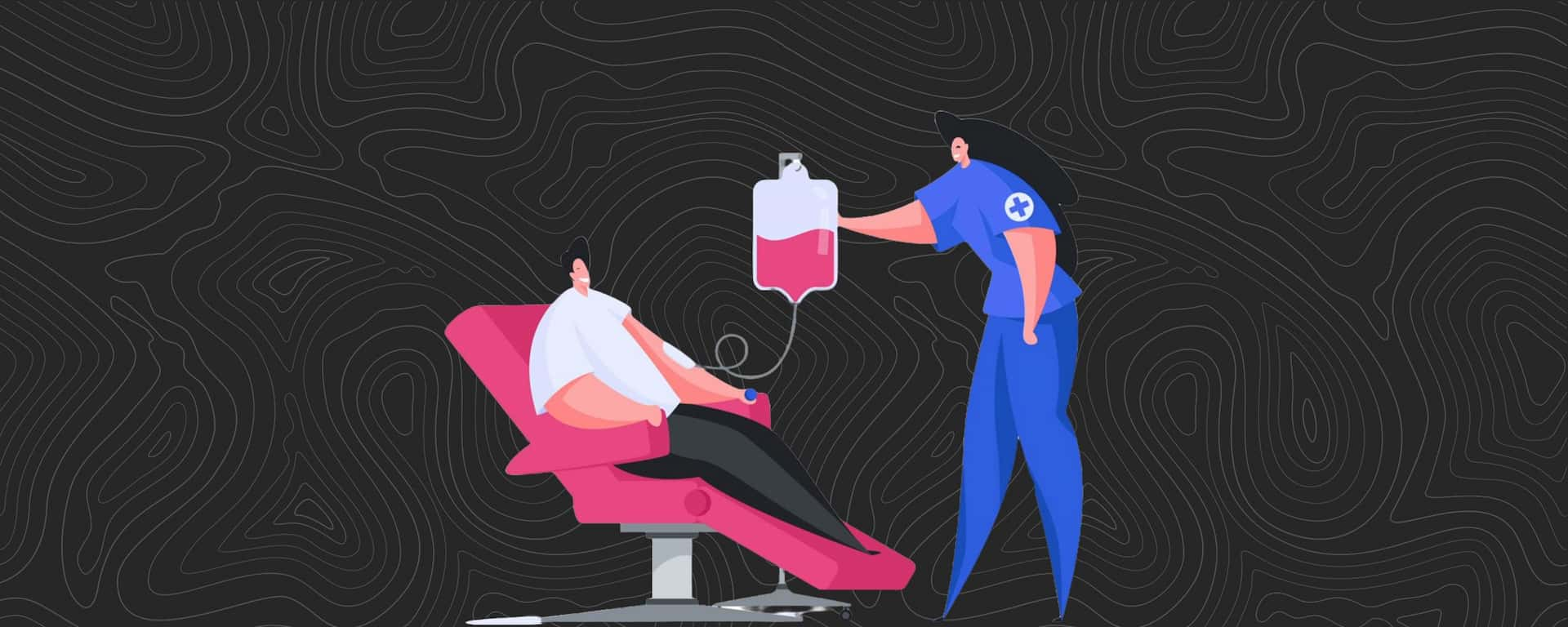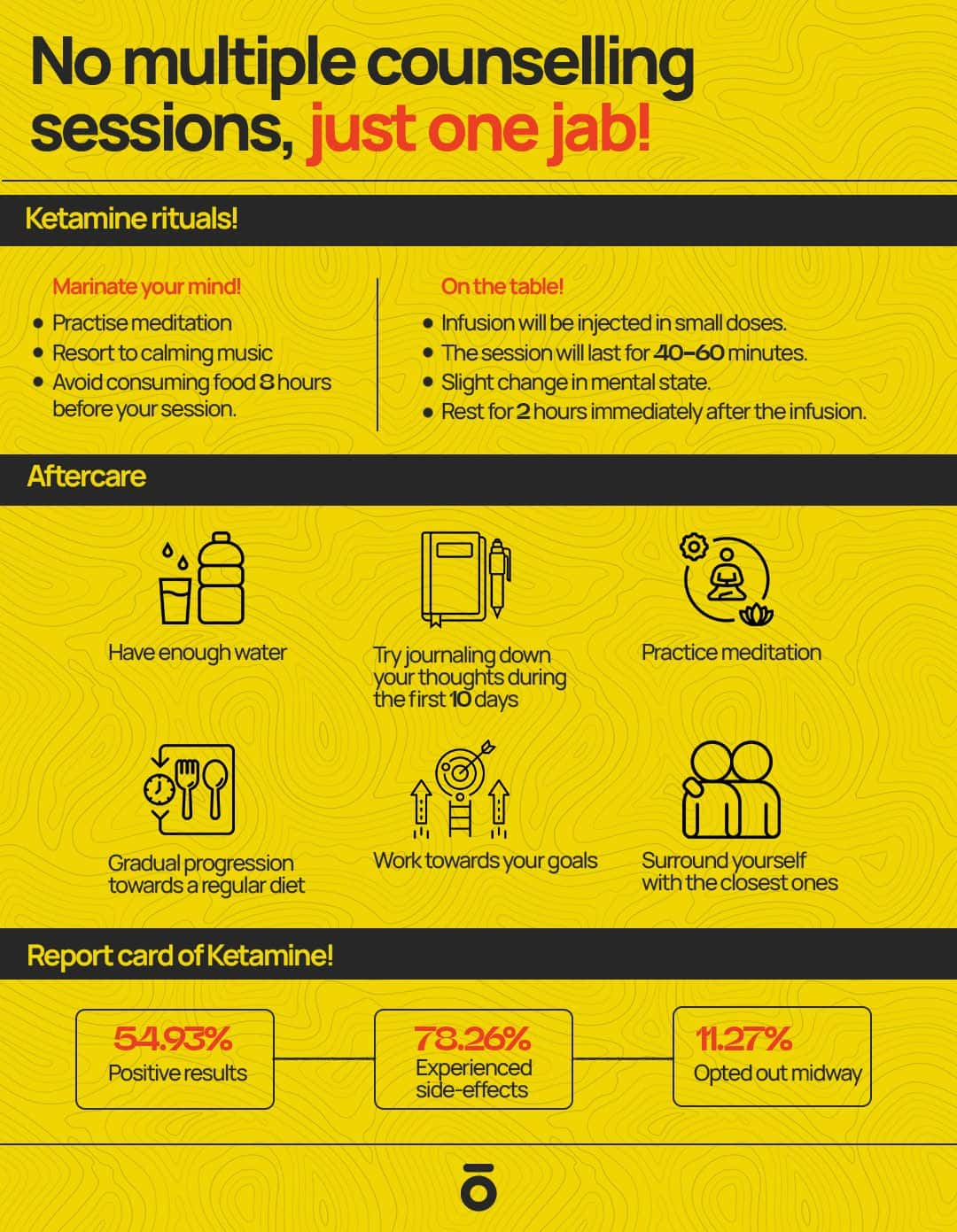Ketamine Infusion Therapy: How It Helps Treat Depression

Introduction
Depression is widespread, and around 57 million people in India have been diagnosed with the disorder. With a proper survey, that number could be much higher. It leaves us feeling alone and hopeless. While traditional medicine like antidepressants has proven to be effective for many people, there are people, including those with Treatment-Resistant Depression (TRD), who do not get the help they can get from these medicines.
For these people, ketamine infusion therapy has emerged as a revolutionary treatment, offering rapid and significant improvements. So, what exactly is ketamine infusion therapy, and how does it work? Let's find out all about it in this blog!
Understanding Depression and the Need for New Treatments
We've all felt sad at times, but depression is so much more than that. It's a condition where the person has a low mood, lack of motivation, fatigue, and impaired cognitive function. For many, traditional antidepressants like SSRIs (selective serotonin reuptake inhibitors) can take weeks to show results if they work at all. Unfortunately, approximately 10%-30% of people with depression do not respond to these treatments. This is where ketamine infusion therapy steps in as a promising alternative.
We've all heard of ketamine before, whether while watching Grey's Anatomy or Family Guy. It's usually used as an anaesthetic but recently has taken some limelight because of how well it can treat depression. What makes it different compared to other SSRIs is that the patient can get immediate relief, making it particularly valuable for people who are in crisis or suffer from TRD.
How Ketamine Works in Treating Depression
So, let's see how it works and how different it is from regular SSRIs:
1. Targeting NMDA Receptors:
Ketamine acts on the brain's glutamate system, particularly by blocking N-methyl-D-aspartate (NMDA) receptors. Glutamate is the brain's biggest neurotransmitter, playing an important role in learning, memory, and brain plasticity.
During depression, the glutamate system is generally dysregulated. By inhibiting NMDA receptors, ketamine helps restore balance, improving the function of the neural circuits involved in mood regulation.
2. Improving Synaptic Connectivity
One of ketamine's most remarkable effects is its ability to promote neuroplasticity, which is the brain's capacity to form and reorganise connections between neurons.
When ketamine is administered, it triggers a butterfly effect of molecular events that lead to the release of brain-derived neurotrophic factor (BDNF), a protein for neural growth and repair. This process helps rebuild synaptic connections damaged by chronic stress and depression, effectively "rewiring" the brain to function more optimally.
3. Rapid Relief of Symptoms
Traditional antidepressants often take weeks or even months to produce noticeable effects because they primarily work by increasing serotonin levels. Ketamine, on the other hand, produces results within hours or maximum, days.
This rapid action is particularly beneficial for people experiencing acute suicidal thoughts, offering them a critical window of relief during which they can seek additional support.
4. Addressing Mood Regulation
Ketamine also modulates activity in the brain's prefrontal cortex and other regions responsible for emotional regulation. This helps reduce feelings of hopelessness, emotional numbness, and negativity, which are hallmarks of depression.

The Ketamine Infusion Process
The process starts off in a clinic or a hospital where ketamine is administered through an IV. Let's now take a look at how it usually goes:
The Prep: Patients have to be screened first to confirm if they are suited to take it, and a blood test is also taken to determine if they have any allergies or other exceptions. Medical history, current medications, and psychological conditions are also evaluated.
The Infusion: The infusion usually goes on for 40-60 minutes. The patients will also be monitored the entire time to ensure everything goes smoothly.
The Experience: Many patients report a sense of detachment and dissociation (their words) during the infusion. While this can feel unusual, it is generally mild and temporary.
Frequency: A standard course of treatment typically involves 6–8 infusions over 2–3 weeks. Some patients may need maintenance sessions to keep the benefits going.
Benefits of Ketamine Infusion Therapy
Immediate Relief
This is easily the biggest advantage. For anyone with suicidal thoughts or severe depression, this can help them get the quick fix they need before transitioning to long-term help.
Efficacy of Treatment
Like we've said before, usual medication or SSRIs might not work for everyone, but ketamine has a much higher efficacy rate.
Reduction in Suicidal Thoughts
Several studies have shown that ketamine can greatly reduce suicidal ideation within hours of administration, making it a vital option for people having these thoughts.
Double Action on Anxiety and Depression
For people dealing with both depression and anxiety disorders, ketamine can provide relief from both conditions at the same time.
Neuroplasticity
Ketamine's ability to repair and strengthen neural connections helps create a more resilient brain, better equipped to handle stress and negative emotions.

Limitations and Challenges of Ketamine Infusion Treatment
While ketamine infusion therapy offers remarkable benefits, it is not without its limitations:
Side Effects
Some patients have experienced side effects such as nausea, increased blood pressure, dizziness, or dissociation. These effects are generally temporary and subside shortly after the infusion ends.
Not a Cure
Ketamine provides symptomatic relief rather than addressing the root causes of depression. It is most effective when combined with ongoing psychotherapy, lifestyle changes, and other treatments.
Accessibility and Cost
Ketamine infusion therapy is really expensive, with the treatment costing lakhs of rupees. Insurance does not always cover it, so its access is very limited.
Long-Term Effects
Although ketamine's short-term efficacy is well-documented, research into its long-term effects is still ongoing. Regular use also raises concerns about dependence or tolerance, which has to be carefully managed.
Why It's a Game-Changer
The introduction of ketamine infusion therapy is changing the way the world sees treatment for depression. That's because this method effectively targets the brain's glutamate system, promoting neuroplasticity and changing the way patients have been treated throughout history.
For people who have felt trapped by their condition, ketamine offers a glimmer of hope, allowing them to experience relief in a matter of days.
Research into this relatively new method is still ongoing, and its role in mental health treatment is set to boom. Innovations in administration methods, such as nasal sprays and oral formulations, are making ketamine more accessible.
Moreover, ongoing studies are exploring its potential for treating other conditions, such as PTSD, bipolar disorder, and chronic pain.
However, the future also hinges on addressing the challenges associated with ketamine therapy, including affordability, accessibility, and long-term safety.





